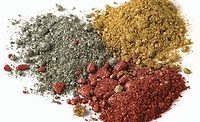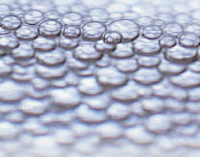Manufacturers are constantly seeking ways to differentiate their products and to more effectively attract the consumer's attention. This drive for differentiation is causing a major move for the inclusion of special effects in color application for everything from automobiles, consumer electronics, furniture and apparel.
Gone are the days of Henry Ford's quote "I'll give you a car in any color you want as long as it is black." Consumers are savvier today and are looking at aesthetics as well as function. Not only does it have to run well, but it has to look good also. The mainstay of these special effects has always been metallic and pearlescent pigments.
NeoResins offers an assortment of resins, which, when handled properly, can be utilized to offer an array of options and appearances using both metallic and pearlescent pigments in waterborne coatings in a variety of markets, including automotive, consumer electronics, apparel, furniture and architectural.
To help our customers better understand the use of metallic and pearlescent pigments in waterborne coatings, we have compiled the following helpful hints for the use of effect pigments with our products.
Metallic Pigments
Metallic (aluminum) pigments are used more in solventborne systems, but are finding a home in waterborne systems due to the advances in aluminum pigment preparation and treatment from suppliers, as well as improved customer knowledge in handling aluminum pigments in water.One major concern associated with aluminum pigments in water has always been the instability of aluminum in water, and the potential for gassing associated with this instability.
Several key areas to observe when working with aluminum in waterborne systems in order to minimize/eliminate adverse conditions, are method of incorporation, wetting of aluminum flake, shear and pH.
Method of Incorporation
When using aluminum flake, prepare a pre-dispersion (slurry) of the aluminum, thereby wetting out the flakes with the appropriate solvent prior to adding to the system to eliminate seeding. It will look like dirt in the system if not properly incorporated. Many aluminum paste manufacturers already supply aluminum paste pre-dispersed in water for easier incorporation into the system.
Shear
Avoid high shear and excessive shear when working with aluminums. High shear and excessive shear will bend the aluminum flake, making it more vulnerable to gassing and diminish sparkle of the aluminum flake, causing a dull, gray appearance (Figure 1).pH
The pH of systems should be no higher than 8.0-9.0; any higher and you run the risk of hydrolysis of the aluminum, or gassing. The use of ammonia as a neutralizing agent should be avoided if possible. The use of Amp 95 is preferred as a neutralizing agent.Aluminum Suppliers
There are many suppliers of metallic pigments, all of which offer aluminum pigments specifically designed for waterborne systems. To name a few: Eckart America, Silberline, MD-Both and Edgmont Metallic Pigments.Resins
The following resins may be used with metallic pigments: NeoCryl A-6115, NeoCryl A-662, NeoCryl A-6075, NeoCryl A-6085, NeoRez R-972 and NeoRez R-960, just to name a few.Pearlescent Pigments
Pearlescent pigments, or "effect pigments" as they are referred to today, offer a limitless array of uses because they are basically inert, non-reactive, and heat and alkaline resistant. Pearlescent pigments are made up of individual, thin, flat crystalline platelets that are coated with titanium dioxide, iron oxide or a combination of both. They are irregular in shape, varying in thickness from 0.1 to 3.0 microns.Pearlescent pigments are transparent; each crystal reflects only part of the incident light reaching it, and transmits the remainder to the crystal below. This simultaneous reflection of light from these many layers give them their "pearlescence", or color, by high interference.
Several key areas to observe when handling pearlescenct pigments in waterborne systems are high shear, hiding and gloss.
High Shear
Pearlescent pigments can be easily incorporated into any waterborne system. High shear is not recommended due to the nature of the pigment (platelet), which can be distorted, causing a loss of color continuity.Hiding
Pearlescent pigments are low hiding, and it is recommended that they be used with full-hide pigments for best appearance and lower cost. As a general rule, the larger the particle the higher the luster and the lower the opacity.Gloss
Pearlescent pigments will affect the gloss of the finished system. When pearlescent pigments attribute a major portion of the color, then a second, high-gloss clearcoat is applied over the pearlescent pigments.Pearlescent Pigment Suppliers
There are many suppliers of pearlescent pigments, all of which offer a variety of pigments specifically designed for special effects and interference colors. To name a few: EMD Chemicals, BASF, Engelhard, Punda Mercantile Inc.Resins
All NeoResin products may be used with pearlescent pigments.Summary
By following the information provided above, the process of formulating a waterborne metallic or pearlescent system should be a lot easier and less problematic. Our ultimate goal is to help our customers meet their customers' needs with quality products. c
For more information, contact James.Brown@neoresins.com or www.neoresins.com.



Report Abusive Comment